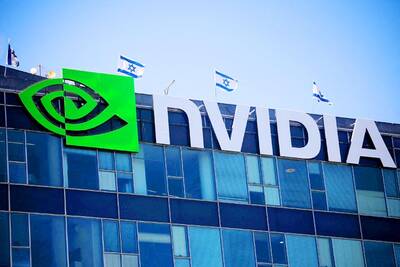Taiwanese companies need to work on decarbonizing or risk being “excluded from the supply chains of the future,” the Ministry of Economic Affairs said yesterday.
Speaking at a forum for decarbonation organized by the Chinese National Federation Industries (CNFI, 全國工業總會), Bureau of Foreign Trade Deputy Director-General Cynthia Kiang (江文若) said that now is the time for Taiwanese companies to start preparing for requirements from countries and companies for greener supply chains and clear accounting of carbon emissions.
The EU in July announced the Carbon Border Adjustment Mechanism (CBAM), under which products produced with a large carbon footprint would face tariffs starting in 2026, Kiang said.

Photo: Lin Jin-hua, Taipei Times
The law’s primary goal is to prevent products with large carbon footprints from competing with those with low footprints made in the EU.
“The 2023 date for the beginning of implementation is extremely challenging,” Kiang said.
Although Taiwanese exports to the EU are limited compared with China, the US and other countries, the trend toward demanding better accounting of carbon emissions and tariffs for higher-carbon products would become increasingly worldwide, Kiang said.
“More important than the direct export of goods to Europe, [Taiwanese businesses] need to take notice of the carbon requirements of major international companies,” Kiang said. “Otherwise they are at risk of being excluded from the global supply chain.”
It is not just tech companies such as Google and Amazon that have made commitments to greening their supply chains, footwear brand Nike has as well, leading to Taiwanese shoemaker Pou Chen Corp (寶成工業), the world’s largest manufacturer of branded athletic and casual footwear, to commit to stopping carbon emissions growth starting in 2025, Kiang said.
“The Bureau of Foreign Trade has been assisting exporters with tracking their carbon footprints whether they are in textile or electronics,” Kiang said. “We wish to accelerate the process of international recognition for our companies as part of the circular economy.”
At the same forum, China Steel Corp executive vice president Wang Shyi-chin (王錫欽) said that the company would be looking to a foundry that uses hydrogen rather than coal to make steel.
“To reach our eventual goal of reducing carbon emissions by 20 percent, we can replace some iron ore with recycled iron scrap, replace coal with hydrogen fuel, and capture more of the gas at the top of the foundry to generate electricity,” Wang said. “By refining our procedures, we can create a lower-carbon or even eventually zero carbon steel.
China Steel hopes to reduce carbon emissions by 7 percent by 2025 and achieve carbon neutrality in the same year, in line with the government’s goal for Taiwan to be Carbon Neutral by 2025.

Shares in Taiwan closed at a new high yesterday, the first trading day of the new year, as contract chipmaker Taiwan Semiconductor Manufacturing Co (TSMC, 台積電) continued to break records amid an artificial intelligence (AI) boom, dealers said. The TAIEX closed up 386.21 points, or 1.33 percent, at 29,349.81, with turnover totaling NT$648.844 billion (US$20.65 billion). “Judging from a stronger Taiwan dollar against the US dollar, I think foreign institutional investors returned from the holidays and brought funds into the local market,” Concord Securities Co (康和證券) analyst Kerry Huang (黃志祺) said. “Foreign investors just rebuilt their positions with TSMC as their top target,

REVENUE PERFORMANCE: Cloud and network products, and electronic components saw strong increases, while smart consumer electronics and computing products fell Hon Hai Precision Industry Co (鴻海精密) yesterday posted 26.51 percent quarterly growth in revenue for last quarter to NT$2.6 trillion (US$82.44 billion), the strongest on record for the period and above expectations, but the company forecast a slight revenue dip this quarter due to seasonal factors. On an annual basis, revenue last quarter grew 22.07 percent, the company said. Analysts on average estimated about NT$2.4 trillion increase. Hon Hai, which assembles servers for Nvidia Corp and iPhones for Apple Inc, is expanding its capacity in the US, adding artificial intelligence (AI) server production in Wisconsin and Texas, where it operates established campuses. This

H200 CHIPS: A source said that Nvidia has asked the Taiwanese company to begin production of additional chips and work is expected to start in the second quarter Nvidia Corp is scrambling to meet demand for its H200 artificial intelligence (AI) chips from Chinese technology companies and has approached contract manufacturer Taiwan Semiconductor Manufacturing Co (TSMC, 台積電) to ramp up production, sources said. Chinese technology companies have placed orders for more than 2 million H200 chips for this year, while Nvidia holds just 700,000 units in stock, two of the people said. The exact additional volume Nvidia intends to order from TSMC remains unclear, they said. A third source said that Nvidia has asked TSMC to begin production of the additional chips and work is expected to start in the second

US President Donald Trump on Friday blocked US photonics firm HieFo Corp’s US$3 million acquisition of assets in New Jersey-based aerospace and defense specialist Emcore Corp, citing national security and China-related concerns. In an order released by the White House, Trump said HieFo was “controlled by a citizen of the People’s Republic of China” and that its 2024 acquisition of Emcore’s businesses led the US president to believe that it might “take action that threatens to impair the national security of the United States.” The order did not name the person or detail Trump’s concerns. “The Transaction is hereby prohibited,”